Solar energy has become increasingly popular, and solar inverters, specifically the “solar inverter”, play a pivotal role in harnessing this renewable resource. With various solar inverters available, each with unique features and applications, making an informed decision is crucial for maximizing efficiency and lifespan. This blog post will provide essential information on solar inverters, including solar inverter. It will guide you through different types, their advantages and disadvantages, and practical tips for choosing the perfect inverter for your needs.
Short Summary
- Solar inverters are essential components that convert DC energy generated by solar panels into AC electricity.
- Different types of inverters offer varying features, advantages and disadvantages for different needs.
- Careful evaluation is necessary to decide on size, cost and lifespan when choosing a solar inverter in 2024, as new technologies promise increased efficiency.
The Essence of Solar Inverters
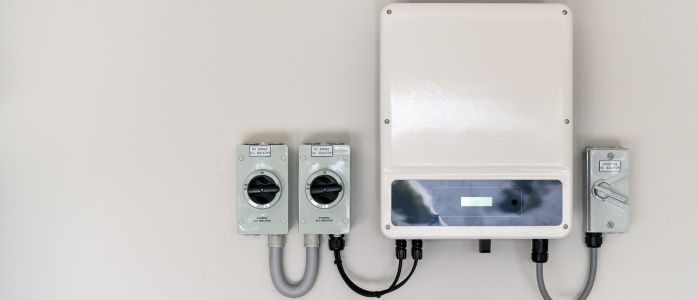
Solar panel inverter, the heart of solar energy systems, transforms the direct current (DC) energy generated by solar panels into alternating current (AC) electricity that can be used by household appliances and connected to the grid. They are essential components that ensure the efficient conversion of solar energy into usable power, making them indispensable for any solar PV system. Solar inverters play a crucial role in harnessing solar power by handling the DC electricity produced by solar panels.
Various solar inverters are available, each catering to different situations and requirements. Cost, efficiency, and safety influence the choice of a solar inverter.
In the next sections, we will delve deeper into the four main types of solar inverters, their features, and applications, guiding you in choosing the best solar inverter for your solar energy system.
Types of Solar Inverters: An Overview
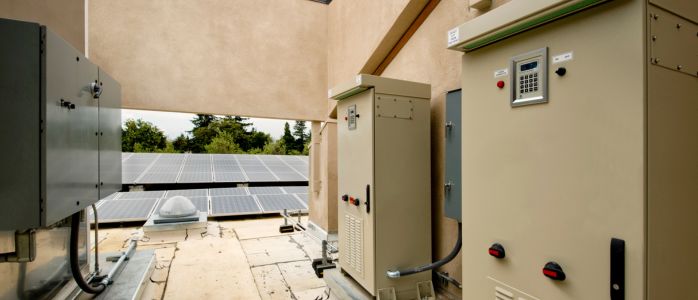
In the solar industry, there are four primary types of solar inverters:
- String inverters
- Microinverters
- Hybrid inverters
- Central inverters
Each type has unique features and applications that cater to varying situations and requirements. Understanding these different types of solar inverters and their specific advantages and disadvantages is crucial in making an informed decision for your solar energy system.
In the following sections, we will analyse each type in-depth.
String Inverters
String inverters are electrical devices that link multiple solar panels together in series, offering a cost-effective solution for solar energy systems with minimal shading and uniform panel orientation. They have the following advantages:
- They connect all or several solar panels to a centrally located inverter, supplying the electrical panel or the grid.
- They are the least expensive option.
- They are easy to install and wire.
- They have fewer components that can fail.
- They require minimal maintenance.
However, string inverters have drawbacks, primarily in their limited design flexibility, making them unsuitable for more complex projects. If one panel is shaded or damaged, the entire system’s performance is negatively impacted, as the output of the entire string of panels is affected.
Nevertheless, string inverters provide an efficient and cost-effective solution for solar energy systems with consistent panel orientation and minimal shading.
Microinverters
Microinverters, also known as microinverters, are specialized solar inverters designed to be installed per panel, maximizing the efficiency of each panel independently from the rest of the system. They convert the direct current (DC) generated by a single solar module into alternating current (AC), making them plug-and-play device. This individual panel optimization allows for increased energy generation and improved system monitoring, providing valuable insights into the performance of your solar energy system.
While microinverters offer numerous advantages but come at a higher initial cost than string inverters. However, these additional costs can be offset by increased energy generation and better system monitoring, making microinverters a worthwhile consideration for your solar energy system, especially in shady areas or systems with non-continuous panels.
Hybrid Inverters
Hybrid inverters, also known as hybrid inverter systems, combine the functionality of solar and battery inverters, allowing for efficient energy storage and grid connection. They enable the conversion of DC power generated by solar (or wind) to AC or stored in a battery before conversion to AC. This provides a more efficient and flexible solution for solar energy systems requiring solar power generation and battery storage capabilities.
However, hybrid inverters come at a higher cost than other inverters and are compatible only with DC-coupled batteries. Despite the higher initial cost, hybrid inverters offer a versatile solution for solar energy systems that require efficient energy storage and grid connection, making them an attractive option for those considering battery storage in their solar energy system.
Central Inverters
Central inverters are specifically designed for larger solar systems, managing multiple strings of connected solar panels more efficiently than other types of inverters. Due to their cost-effectiveness, they are often used in large-scale solar farms, as fewer inverters are needed per site than string inverters. Their higher efficiency and reduced cost make central inverters appealing for large-scale solar projects.
However, one potential drawback of central inverters is the risk of power loss in the event of a single inverter failure due to the centralized structure of the system. Despite this risk, central inverters offer a cost-effective and efficient solution for large-scale solar energy systems, making them a popular choice in the solar industry.
Maximizing Solar Energy Production: MPPT and Optimizers
Maximum Power Point Tracking (MPPT) and optimizers play a crucial role in maximizing solar energy production by tracking and adjusting the output of solar panels for optimal performance. MPPT algorithms, such as perturb-and-observe and incremental conductance, leverage the power curve plotted against voltage to ensure the optimum power is harvested from the PV array.
Power optimizers are electronic components installed in each solar panel. They work with a central inverter to maximize energy production. This is done by controlling individual panel output and mitigating the effects of shading or mismatched panel configurations. By incorporating MPPT and optimizer technologies in solar inverters, solar energy systems can achieve maximum efficiency and increased energy production, making them essential components for optimizing solar energy generation.
Factors to Consider When Choosing a Solar Inverter
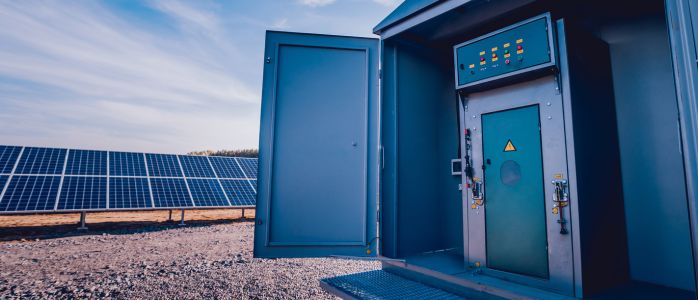
Various factors must be considered when selecting a solar inverter for your solar energy system. Some of the aspects that influence the choice of a solar inverter include:
- System size
- Panel orientation
- Shading
- Budget constraints
For example, string inverters are the most effective system for unshaded solar panels on a single plane. In contrast, microinverters or optimizer systems are more appropriate for shady areas or panel systems that aren’t continuous.
Consulting with a reputable solar installation company can offer valuable insights into the best solar inverter for your specific needs and circumstances. By considering these factors and carefully evaluating the different types of solar inverters available, you can make an informed decision that ensures your solar energy system operates efficiently and effectively.
Solar Inverter Costs and Lifespan
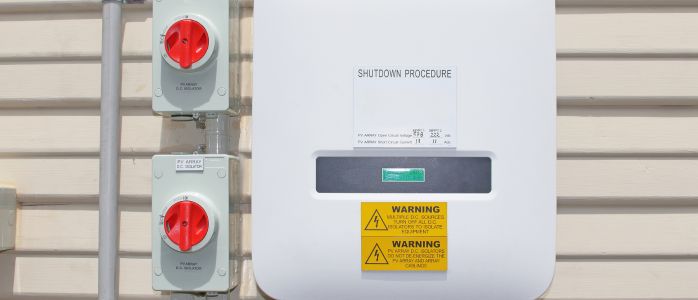
The costs of solar inverters vary depending on the type and size, with an average lifespan of 10-15 years. It is important to consider long-term benefits and maintenance when deciding which solar inverter to invest in. For instance, residential solar inverters typically range from £1,000 to £2,000, and additional expenses such as installation fees and necessary accessories should also be considered.
Considering the lifespan of your solar inverter is equally essential, as an incorrectly sized or low-quality inverter can result in inefficiencies in your system, leading to increased electricity bills or even damage to your property. By carefully evaluating the costs and expected lifespan of different solar inverters, you can make a well-informed decision that maximizes the efficiency and longevity of your solar energy system.
Sizing Your Solar Inverter: Tips and Best Practices
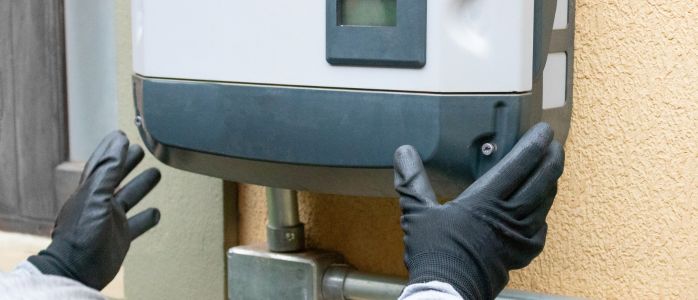
Properly sizing your solar inverter is crucial for system efficiency and longevity. Factors such as total solar panel capacity, household power consumption, and peak demand should be considered when determining the size of your inverter. Incorrectly sized inverters can cause a variety of problems. Electricity bills can skyrocket, and property damage is even possible.
It is recommended to select an inverter with a capacity greater than the total capacity of the solar panel system. This ensures that the inverter can handle the power output of your solar panels, optimizing system efficiency and durability. By considering these factors and accurately sizing your solar inverter, you can ensure your solar energy system operates at peak performance, maximizing efficiency and lifespan.
Solar Inverter Safety and Monitoring Features
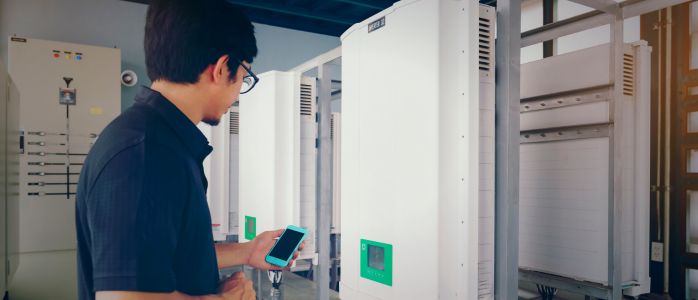
Solar inverters have various safety and monitoring features to ensure compliance with grid regulations and provide real-time performance data for system optimization. These features include over-voltage, over-current, and short-circuit protection, which helps guarantee the safety of the solar system and its components.
Microinverters generally include the following safety and monitoring features:
- Anti-islanding
- Short circuit protection
- Reverse polarity protection
- Low voltage protection
- Over-voltage protection
- Over-temperature protection
By incorporating these features, solar inverters ensure the safe operation of your solar energy system and provide valuable insights into its performance, allowing for ongoing optimization and increased energy production.
Innovations in Solar Inverter Technology for 2024
As we look ahead to 2024, we can anticipate exciting advancements in solar inverter technology. These innovations include:
- Increased conversion efficiency
- Improved safety features
- Advancements in MPPT and optimizer technologies
- Artificial intelligence (AI) developments are expected to have a considerable impact on solar inverter technology in the coming years.
These innovations promise to optimise solar energy production further and enhance system efficiency, making solar energy an increasingly attractive option for residential and commercial applications. By staying informed about the latest developments in solar inverter technology, you can make well-informed decisions about your solar energy system and maximize its efficiency and effectiveness.
Summary
In conclusion, solar inverters are crucial in solar energy systems, converting DC power from solar panels into usable AC power for appliances and grid connections. Understanding the different types of solar inverters, their features, and their applications is essential for making an informed decision that ensures your solar energy system operates efficiently and effectively. By considering factors such as system size, panel orientation, shading, budget constraints, and the latest innovations in solar inverter technology, you can choose the best solar inverter for your specific needs and requirements, maximizing the efficiency and lifespan of your solar energy system.
Frequently Asked Questions
What does a solar inverter do?
A solar inverter is a device that converts the direct current (DC) electricity generated by solar panels into alternating current (AC) electricity, which is used in electrical circuits and appliances.
This device is essential for any solar energy system, as it allows the energy generated by the solar panels to be used in the home or business. Choosing the right inverter for your system is important, as it will determine the efficiency and reliability of your solar energy.
Which solar inverter is best for home use?
For home use, the best solar inverters are those that have been rated highly on the market. Look for top-rated models to ensure reliable performance and maximum efficiency.
Does a solar inverter use a lot of electricity?
Solar inverters are very efficient, using only 10-25W of the input DC power. Their efficiency can be improved with Maximum PowerPoint Tracking (MPPT). So a solar inverter does not use a lot of electricity.
How much is a solar PV inverter UK?
The cost of a solar PV inverter in the UK typically ranges from £500 to £1500 for a domestic system, while larger commercial-scale inverters can be between £1,500 and £4,500.
Your installer can provide more information on the inverter that fits your needs.
Which type of solar inverter is best for a solar energy system with minimal shading and uniform panel orientation?
String inverters are the best choice for solar energy systems with minimal shading and uniform panel orientation.
They are more efficient than microinverters, and they are also more cost-effective. String inverters are also easier to install and maintain, making them a great choice.
What is the difference between a micro inverter and a standard solar inverter?
Solar inverters, often called string inverter or central inverter, takes the direct current (DC) electricity produced by multiple solar panels linked in series and converts it into alternating current (AC) electricity for home use. This means all the panels in that series feed into one inverter.
Micro inverters are small inverters placed on each solar panel’s back. Each micro-inverter converts the DC electricity from its respective panel into AC electricity at the source. This means each panel operates independently.
